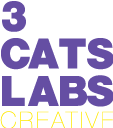Choosing whether or not to kill a product feature is always tough for a client, no matter if the features are part of an app, website, or even a physical product. It’s particularly hard for CEO’s or others in top management who have been with the company since its early days. Some may have even been the creator or had the inspired idea to add the feature, and now they have to decide its fate.
Most product roadmaps include the addition of features. Or like some smaller companies, there might not even be a roadmap and features are ad hoc and cobbled together in a mash-mash that works.
So, how do you choose when and if to kill a product feature? There are many.
(Some) Reasons to Kill a Product Feature
Barely Anyone Uses It
Would anyone notice if the feature disappeared? Would only a small percentage complain? If yes is the answer to those questions it’s probably safe to remove the feature.
You’re Losing Users
If it’s taking too much time to figure out how to use your product or get started using it. There’s no point in keeping features that drive people away.
Dilutes Your Value Proposition
Your product doesn’t have to do everything. Don’t get lost in add ons. Have a product that solves a problem and solves that problem well.
Stepping On The Toes of Other Features
Don’t have conflicting features. If you have a premium tier and everyone is happy with the free package. You should look at what features are causing users to have little or no interest in your paid tier.
Costly to Maintain
Once a feature is created it needs to be maintained. Does it take a lot of resources to update? Is it better if those same resources were allotted to a different area?
But How to Kill a Product Feature?
Don’t dive in and just start tearing apart your product and then restart from scratch. That’s not the way to do it, at least most of the time. Sometimes it is needed but usually not.
The safer way to start this process and not create chaos or make a huge error is to create a list. Start with “kill list”. This list will contain all the features that you (or your team) think the product is better off without.
After creating a list get an outside set of eyes on the “kill list”. Then go over it with them and explain why each items has been placed on the list. Some will be obvious but others might needs some additional explanation.
Also make sure that you don’t break anything by accident. When making a list or actually removing features there might be connections that have been forgotten or overlooked. Will users get error messages? Are there old or ancient links from long ago? Any tracking that needs to be updated? These items and more need to be considered before sunsetting a feature.
Ok, ready to kill a product feature or two? Hold on, you still need to ensure your whole team is aware and has been involved. Check with your developers to ensure there aren’t any surprises. Also be sure to have your customer relations team and community managers prepared with responses and procedures to handle any consumer backlash. Better safe than sorry.
The Methods
Cold Turkey
If you’re only getting as many clicks as you have developers, that probably means all your clicks are for testing. Even if it is a few clicks out of thousands the removal probably won’t be a big deal to users.
Be ready to communicate why you’re doing this. Most users will be almost surprisingly understanding. Also creates a great opening for declaring what you will be focusing on with this change and clarifying your direction.
Weaning
Discuss with your developers on how to remove the functions for a small portion of users. Based upon the response you can add to the pool of users in the test pool or if confident you can remove the feature.
Full Disclosure
Even if the changes are minor you will get backlash from somebody or even a small group. This is especially true if a major overhaul has been done. Be prepared to answer a flood of sometimes tough questions. Also listen to social media because a lot of conversation will happen across platforms.
No matter how much for the better your changes are, they will still be met with resistance. You see this every time Facebook makes a small change.
Communication will have a major influence on how your feature cull is received by the masses.
“I made the wrong choice!” Moment
Don’t just panic and start rolling back your release because of some irrational thinking. Calm down and think back as to why you determined it was essential to kill that particular feature and why you’re now thinking that was the wrong decision.
Customer backlash? Was it your favorite feature? Your baby? Or just the personal favorite of another individual? This is your chance to be the reasonable voice. Explain why the feature was removed. Be ready to backup your reasoning.
Of course you also need to be ready to admit you were wrong. Maybe it was measured incorrectly or its usefulness was underestimated. Maybe it was too hidden? Why not re-release it as a core feature with your new product. Put a positive spin on the situation.
“Less is more, or, “Good design is as little design as possible.” – Dieter Rams
Let’s Talk About Your Brand
shane@3catslabs.com | Call +65-3159-4231
Share




Valuable info. Lucky me I found your site by accident, and I am shocked why this accident did not happened earlier! I bookmarked it.
http://www.hairstylelook.com